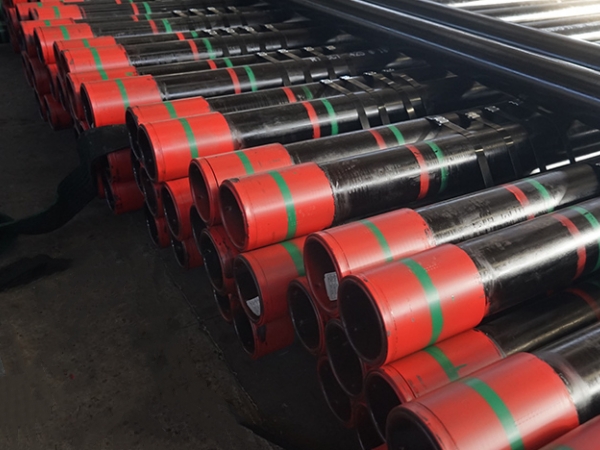The hydrostatic pressure test of oil casing constitutes an essential facet of the steel pipe manufacturing process. Its primary role is to assess the leakage resistance of steel pipes under standard test pressure and ascertain pressure stabilization over a specific duration. Similar to radiography, ultrasonic testing, and other flaw detection methodologies, it serves as a crucial means of appraising the overall quality of steel pipes.
A conventional depiction involves filling pipes with water and subjecting them to pressure to sustain a designated pressure without any leaks or ruptures. The procedure encompasses three fundamental steps: flushing, pressure testing, and water control.
The hydraulic testing machine for oil casing pressure evaluation employs a pressurized cylinder approach. This method is characterized by rapidity, stability, and reliability in pressurization. It incorporates automatic control technology for exhibiting water pressure curves, inputting and outputting test statistics, and storing test data.

Key Aspects for Subsequent Technical Operations:
1. Parameter Configuration: Adjust the test pressure value and pressure stabilization time in accordance with the specifications, steel grade, and thread type of the pipe being tested.
2. Perform a hydrostatic test along the entire length of each pipe, adhering to the specified test pressure and minimum pressure stabilization time as outlined in the process card (with potential adjustments based on raw material quality).
3. During pressure testing, consistently inspect the seals for integrity and potential leaks.
4. Maintain the pipeline test pressure within the range of≥standard hydraulic test pressure.
Precautions for Subsequent Operations:
1. If the actual hydraulic pressure test falls short of the standard pressure due to equipment issues, promptly notify the technical department for necessary process adjustments.
2. In case of inadequate pressure stabilization during the test, scrutinize seals and pipelines for leaks, undertaking repairs as needed.
3. Post-pressure test, meticulously check for any knocks on the pipe body.
API 5CT Standard Hydrostatic Pressure Test Regulations:
1. The hydraulic test pressure for pipes with couplings and threads is determined as the minimum value among the hydraulic test pressure of flat-head pipes, the maximum hydraulic test pressure of couplings, and the internal pressure leakage resistance. However, the standard maximum pressure is 69MPa, with calculated values generally rounded to the nearest 0.5MPa.
2. As per API requirements, hydrostatic test pressure measuring devices must undergo calibration within four months before each use.
3. If specific customer demands exist, a higher hydraulic test pressure may be selected.
4. Leakage during the hydrostatic pressure test forms the basis for rejection.
5. Unless otherwise agreed upon between the supplier and the buyer, hydrostatic testing is not required for coupling blanks, coupling materials, or adjacent materials.